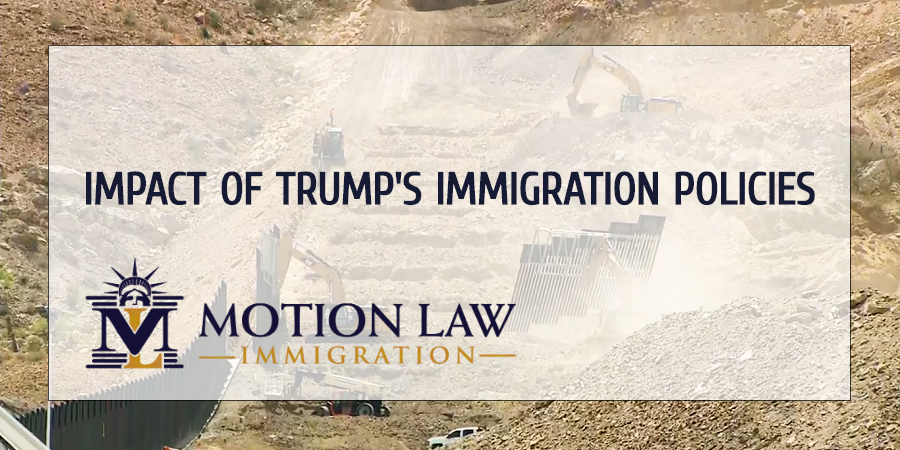Impact of Trump’s Immigration Policies

Current Government- Immigration Policies
Since President Trump took office in January 2017, there have been drastic changes regarding immigration. The government has constantly focused on changing the statutes of immigration laws.
The main changes are the following:
- Immigration laws are more complex. Now, even if you want to migrate to the US legally, the process is longer and has specific requirements that must be met before the entry or residence is granted by the government. Therefore, it is imperative to have specialized guide on immigration laws to avoid rejection of the petition.
- The end of DACA. Deferred Action for Childhood Arrivals (DACA) was a benefit for undocumented immigrants who arrived to the US when they were children (under 16). The protection program prevented the so-called “dreamers” from being deported and helped them to continue their legal immigration process.DACA protected young immigrants who met certain requirements and granted them a residence permit for two years that could be renewed.However, in 2017, Trump’s administration eliminated this benefit that protected more than 750,000 young people. Many of them have been deported or are in deportation process because they are no longer protected by the Department of Homeland Security (DHS).
- Reduction of Humanitarian Programs. Over the last 3 years, humanitarian benefits for immigrants have been removed. For example, the Temporary Protected Status (TPS) was removed during Trump’s presidency.The TPS was a humanitarian program that granted deportation protection to immigrants enrolled in it.Immigrants protected by the TPS had to meet specific requirements such as being from a country affected by natural disasters, violence, inter alia. This program protected more than 300,000 immigrants who are now in deportation process or have already been deported.
- Obstacles for asylum and residences’ requests. Previously, the government protected immigrants seeking asylum, as it is considered an obligation for international human rights.However, Trump’s administration established a rule called “Remain in Mexico”. It states that all immigrants seeking asylum must remain on the Mexican border while receiving a response from the US Citizenship and Immigration Service (USCIS) or by a local court.Currently, Mexico’s borders have thousands of immigrants waiting for a response in difficult and unhealthy situations.
- Border wall construction. Trump’s administration has used funds for social and protection investments to create a border wall between Mexico and the US.The president says that illegal immigration is a constant problem, therefore, closing borders is a positive change to prevent illegal entry into the country. However, there are border areas with sea and the wall does not cover that
What are the social consequences of migratory changes?
It is notable that the population of the US is divided by their political and social beliefs. Trump’s main impact with the abrupt changes in immigration policies is that society has split in two.
A part of the population agrees completely with the new policies because they think that illegal immigration affects negatively the country.
There is also the other part of the population that defends immigrants and promotes more rights to enter the country. The advocates say that if there were more possibilities to migrate legally, people would not try to enter the country illegally and in fact, they could be a great benefit to the country.
If you have any questions about an immigration issue or relating to a case you may have currently in Progress, then please don’t hesitate to contact us for a FREE Consultation with one of our expert immigration attorneys.
Alternatively, simply call Motion Law today at: (202) 918-1799
